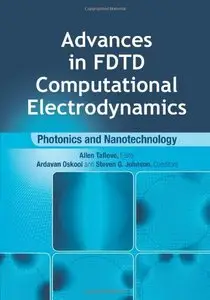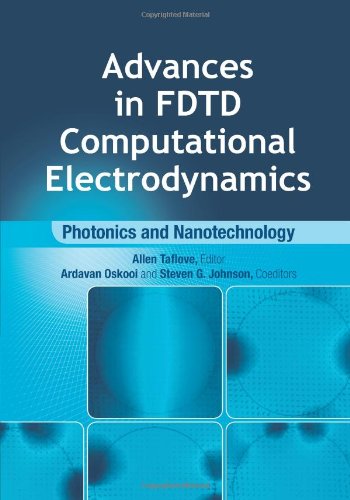Advances in FDTD Computational Electrodynamics: Photonics and Nanotechnology by Allen Taflove, Steven G. Johnson and Ardavan Oskooi
English | 2013 | ISBN: 1608071707 | ISBN-13: 9781608071708 | 750 pages | PDF | 19,6 MB
English | 2013 | ISBN: 1608071707 | ISBN-13: 9781608071708 | 750 pages | PDF | 19,6 MB
Advances in photonics and nanotechnology have the potential to revolutionize humanity s ability to communicate and compute. To pursue these advances, it is mandatory to understand and properly model interactions of light with materials such as silicon and gold at the nanoscale, i.e., the span of a few tens of atoms laid side by side.
These interactions are governed by the fundamental Maxwell s equations of classical electrodynamics, supplemented by quantum electrodynamics.
This book presents the current state-of-the-art in formulating and implementing computational models of these interactions. Maxwell s equations are solved using the finite-difference time-domain (FDTD) technique, pioneered by the senior editor, whose prior Artech books in this area are among the top ten most-cited in the history of engineering. You discover the most important advances in all areas of FDTD and PSTD computational modeling of electromagnetic wave interactions.
This cutting-edge resource helps you understand the latest developments in computational modeling of nanoscale optical microscopy and microchip lithography. You also explore cutting-edge details in modeling nanoscale plasmonics, including nonlocal dielectric functions, molecular interactions, and multi-level semiconductor gain. Other critical topics include nanoscale biophotonics, especially for detecting early-stage cancers, and quantum vacuum, including the Casimir effect and blackbody radiation.
Contents: Subpixel Smoothing of Curved Material Surfaces. Wave Source Conditions and Local Density of States. Perfectly Matched Layers and Adiabatic Absorbers. Plasmonics. Resonant Device Modeling and Design. Metamaterials and Negative Refraction. Transformation Optics. Meep (MIT FDTD Free Software). Biophotonics. Lithography. Computational Microscopy. Spatial Solutions. Quantum Phenomena. Hardware Acceleration.



